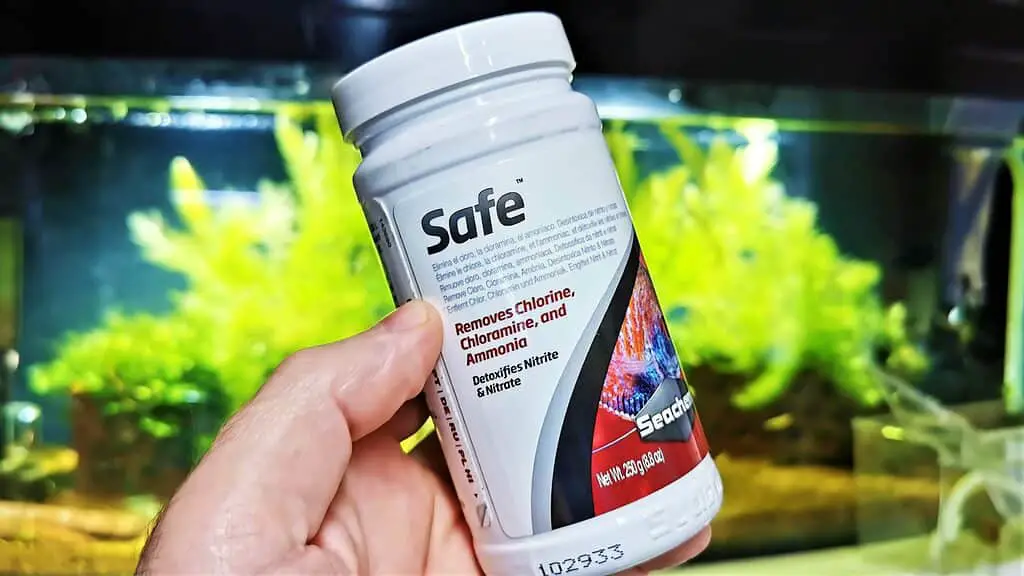I. Introduction To Selling Sherry Shrimp
Hey there, fellow shrimp enthusiasts! Welcome to our ultimate guide on selling cherry shrimp. If you’re like me, you’re probably passionate about these beautiful, colorful little creatures and the joy they bring to our aquariums.
Cherry shrimp, also known as Neocaridina davidi, are a popular freshwater shrimp species that are loved for their vibrant red coloration and their relatively easy care requirements.
They’ve become a staple in the aquarium trade, with hobbyists and professionals alike appreciating their hardy nature and attractive appearance.
In this article, we’ll be diving into everything you need to know about selling cherry shrimp, from setting up the perfect tank environment to breeding, packaging, and shipping your shrimp, and even managing customer relations.
So, let’s get started on this exciting journey together!
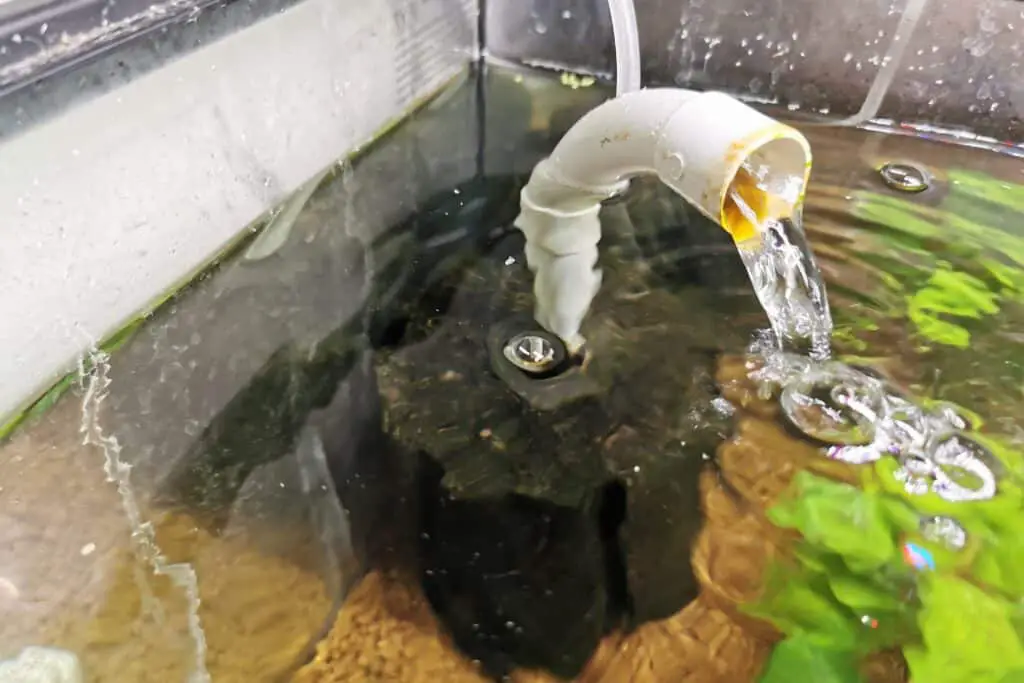
II. Tank Setup
A. Setting up the right tank environment is crucial for the health and well-being of your cherry shrimp.
A properly designed tank will provide them with a comfortable space to live, breed, and grow, ensuring that you have a healthy and thriving population to sell.
B. Tank size is one of the first things you should consider when setting up your cherry shrimp tank.
- Bigger is definitely better when it comes to shrimp tanks. A larger tank provides more swimming space, better water stability, and increased opportunities for shrimp to find food and hideouts. In a more spacious environment, shrimp will be less stressed, which translates to better health and breeding success.
- The recommended minimum tank size for cherry shrimp is 5 gallons. However, if you’re planning on breeding and selling cherry shrimp, a 10 to 20-gallon tank would be more suitable to accommodate the growing population.
C. Plants play a vital role in a cherry shrimp tank.
- A heavily planted tank offers multiple benefits. Plants help maintain water quality by absorbing excess nutrients and providing oxygen. They also create a more natural environment, offering shelter and hiding spots for your shrimp. Additionally, plants serve as a food source for the shrimp, as they love to graze on the biofilm that forms on plant surfaces.
- Some recommended plant species for a cherry shrimp tank include Java moss, Anubias, Java fern, and various species of Cryptocoryne. Floating plants, such as duckweed and frogbit, can also be a great addition, providing additional cover and helping regulate light levels.
D. Filtration is another essential aspect of a successful cherry shrimp tank.
- Over-filtration, or using a filter rated for a larger tank than the one you have, offers several advantages. It ensures better water quality by removing more debris and waste, and it helps maintain stable water parameters. Over-filtration also reduces the need for frequent water changes, making maintenance easier.
- Sponge filters are an ideal choice for cherry shrimp tanks. They provide gentle water flow, which is suitable for shrimp, and they prevent shrimp from being sucked into the filter intake. Moreover, sponge filters harbor beneficial bacteria that break down waste and create an additional grazing area for your shrimp.
III. Picking and Maintaining Healthy Shrimp
A. Choosing the right shrimp for breeding is a critical step in ensuring a healthy and successful population for selling.
- When selecting shrimp for breeding, look for individuals with vibrant coloration, active behavior, and a healthy appearance. Avoid shrimp that seem lethargic, have poor coloration, or display any signs of illness. Size and age also matter: aim to select young, sexually mature shrimp that are around 3-4 months old, as they tend to be more prolific breeders.
- To maintain a diverse gene pool, it’s essential to introduce new, unrelated shrimp into your breeding stock from time to time. This practice helps to prevent inbreeding, which can lead to health issues and reduced vitality in the offspring.
B. Monitoring your shrimp for diseases and parasites is crucial for maintaining a healthy population.
- Some common diseases and parasites in shrimp include bacterial infections, fungal infections, and parasitic infestations such as Scutariella japonica and Vorticella. Being aware of these issues and monitoring your shrimp regularly can help you catch problems early and prevent them from spreading throughout your population.
- Signs of a healthy shrimp include active swimming and foraging behavior, bright and consistent coloration, and a clean, clear exoskeleton. Healthy shrimp will also have a good appetite and breed regularly.
C. Eliminating parasites is vital for maintaining a healthy shrimp population.
- To prevent and treat parasites, consider using targeted treatments such as “No Planaria” for planaria infestations. Follow the manufacturer’s instructions carefully and keep an eye on your shrimp during treatment to ensure their well-being. Always quarantine new shrimp before introducing them to your main tank to minimize the risk of introducing parasites or diseases.
- Maintaining a healthy environment is key to minimizing the risk of parasite infestations. Ensure that your tank is clean and well-maintained, and perform regular water changes to keep water parameters stable. Avoid overfeeding, as excess food can lead to poor water quality and create a breeding ground for parasites. Finally, closely monitor your shrimp and act quickly if you notice any signs of illness or infestations.
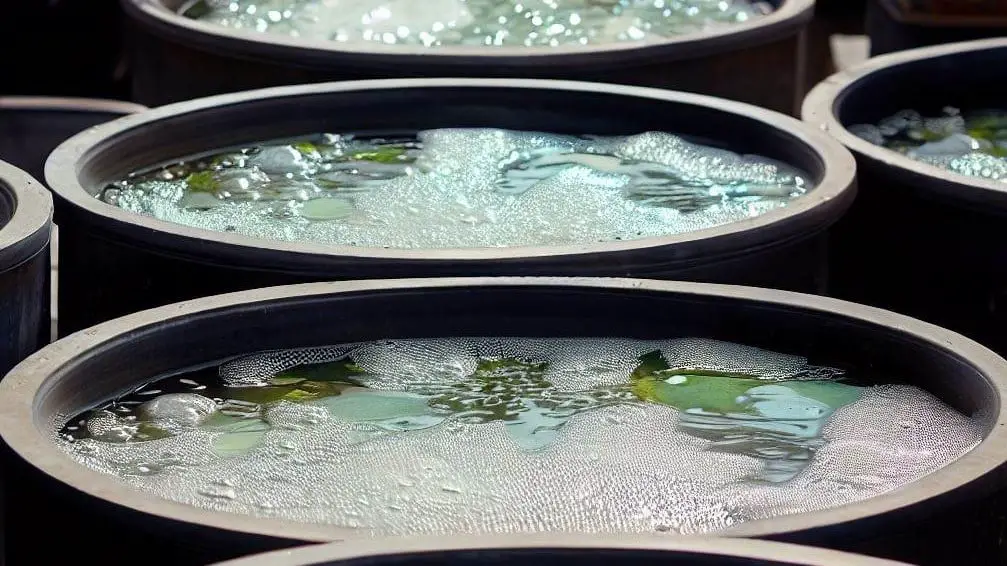
IV. Mass Breeding
A. Several key factors contribute to successful breeding in cherry shrimp:
- Water parameters: Maintain stable water parameters, with a temperature between 72-78°F (22-25°C), pH between 6.5-7.5, and a GH (general hardness) between 4-8 dGH. Consistent water quality is vital for healthy shrimp and successful breeding.
- Diet: Provide a varied and nutritious diet, including high-quality shrimp pellets, blanched vegetables, and occasional protein sources like bloodworms or brine shrimp. A well-fed shrimp population is more likely to breed.
- Hiding spots: Ensure your tank has plenty of hiding spots, such as plants, rocks, and driftwood, to help shrimp feel secure and encourage breeding.
- Stress reduction: Minimize stressors like sudden water changes, excessive noise, or bright lights
 to create a comfortable environment that promotes breeding.
to create a comfortable environment that promotes breeding.
B. Monitoring and managing your shrimp population is essential to prevent overcrowding and maintain a healthy environment.
- Keep an eye on the number of shrimp in your tank, and be prepared to move some to another tank or sell them if the population gets too large.
- Track breeding patterns and identify any changes or issues that may affect reproduction. Adjust tank conditions, diet, or other factors as needed to promote successful breeding.
C. Separating young shrimp from adults can be helpful in certain situations:
- It allows you to provide the young shrimp with special care and attention, ensuring their optimal growth and development.
- Separation prevents adult shrimp from competing with the young for food, which can be particularly important if you plan to sell the younger shrimp.
- In a separate tank, it’s easier to monitor the young shrimp’s health and growth, allowing you to address any issues that may arise promptly.
- Keep in mind that cherry shrimp are generally peaceful and can coexist with their offspring without issues. Separating them is an optional step, primarily beneficial for breeding purposes or if you aim to sell the younger shrimp.

V. Food and Nutrition
A. Providing proper nutrition is essential for the health, growth, and breeding success of your cherry shrimp. A balanced and varied diet helps to maintain vibrant coloration, supports a robust immune system, and ensures that your shrimp population thrives.
B. Some recommended types of food for cherry shrimp include:
- Crushed flakes: A staple food for many aquatic species, crushed flakes can provide an excellent source of nutrition for cherry shrimp. Make sure to choose a high-quality brand with a well-balanced composition of nutrients.
- Sinking pellets: Specially formulated shrimp pellets offer a balanced diet designed specifically for shrimp, containing all the essential nutrients they need.
- Pleco wafers: Though designed for bottom-feeding fish like plecos, these wafers can also serve as a supplementary food source for cherry shrimp. They provide essential nutrients and encourage natural foraging behavior.
- Vegetables: Blanched vegetables, such as spinach, zucchini, and lettuce, can be a great addition to your shrimp’s diet. Vegetables offer essential vitamins and minerals that contribute to overall health.
C. Feeding frequency and portion size:
- Feed your cherry shrimp once or twice a day, providing enough food that they can consume within 2-3 hours. Overfeeding can lead to poor water quality and potential health issues, so it’s essential to monitor your shrimp and adjust feeding portions as needed.
- Keep in mind that cherry shrimp also graze on biofilm and algae in the tank, so it’s important not to overfeed them.
D. Buying food in bulk:
- Purchasing shrimp food in bulk can be cost-effective, especially if you have a large shrimp population or multiple tanks.
- Be mindful of the shelf life of the food you’re buying, and store it properly in a cool, dry place to maintain its quality and freshness.
- Buying in bulk also allows you to provide a variety of food options for your shrimp, ensuring a balanced and diverse diet.
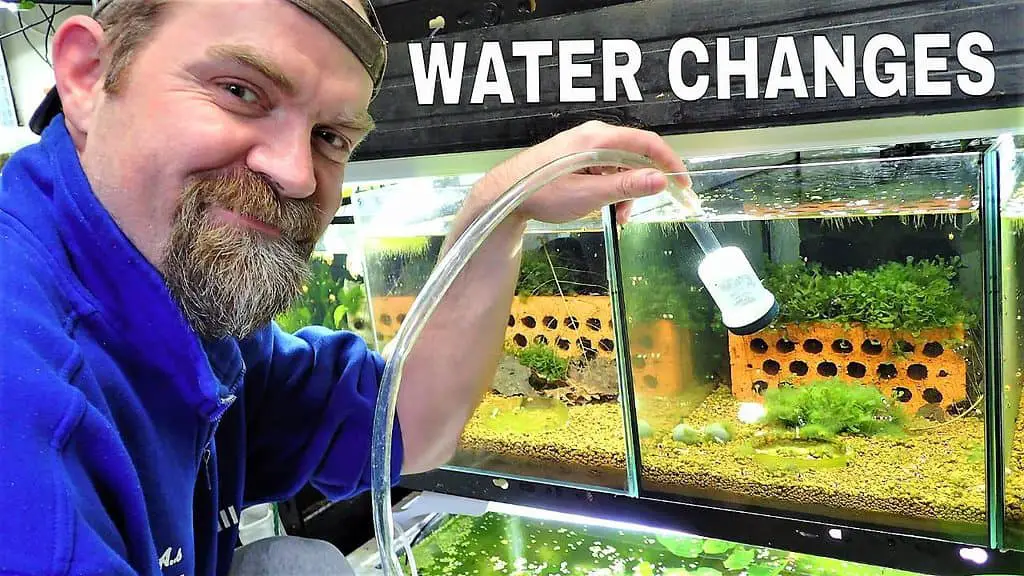
VI. Water Changes and Quality
A. Regular water changes are essential for maintaining a healthy and stable environment for your cherry shrimp.
Water changes help remove waste, excess nutrients, and potential toxins from the tank, ensuring that your shrimp have clean, safe water to live in.
B. Appropriate water change frequency:
frequency:
- For a cherry shrimp tank, it’s generally recommended to change around 20-25% of the water every 1-2 weeks. However, the exact frequency will depend on factors such as tank size, population, and the effectiveness of your filtration system.
- Monitor your water parameters regularly to determine the optimal water change schedule for your specific tank. If you notice a decline in water quality, you may need to increase the frequency of water changes.
C. Using dechlorinators for tap water:
- Tap water
 often contains chlorine or chloramine, which can be harmful or even lethal to aquatic life, including shrimp. It’s crucial to use a dechlorinator
often contains chlorine or chloramine, which can be harmful or even lethal to aquatic life, including shrimp. It’s crucial to use a dechlorinator to neutralize these chemicals before adding tap water to your tank.
to neutralize these chemicals before adding tap water to your tank. - Choose a high-quality dechlorinator that effectively neutralizes both chlorine and chloramine, and follow the manufacturer’s instructions for proper dosage.
I use Seachem Safe because it is the best dechlorinator on the market and it is very cost effective.
D. Monitoring water parameters:
- Regularly testing and monitoring water parameters, such as temperature, pH, GH (general hardness), KH (carbonate hardness), ammonia, nitrite, and nitrate, is crucial for maintaining a healthy environment for your cherry shrimp.
- Use reliable testing kits to check water parameters and make adjustments as needed. If you notice any sudden changes or imbalances, address them promptly to minimize stress and potential health issues for your shrimp. Regular monitoring helps you stay on top of your tank’s health and ensures a thriving environment for your cherry shrimp
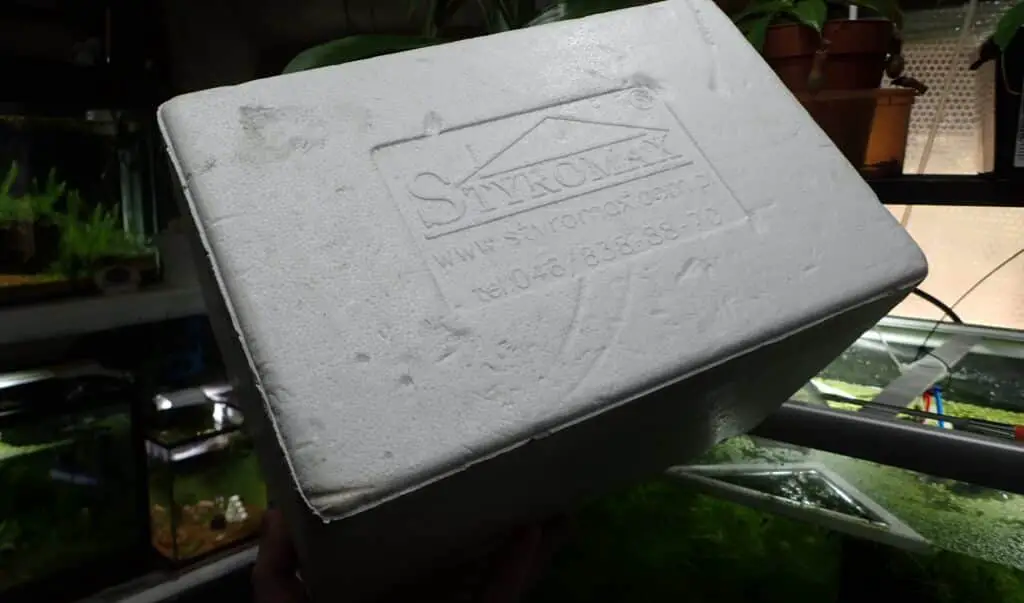
VII. Preparing Shrimp for Sale
A. Selling young shrimp:
- The ideal size for selling cherry shrimp is around 1cm. At this size, they are young enough to adapt well to new environments and have a long lifespan ahead of them, making them more attractive to potential buyers.
- Benefits of selling young shrimp include: a. Easier acclimation to new environments b. Increased likelihood of successful breeding in their new home c. Longer remaining lifespan, which is appealing to buyers
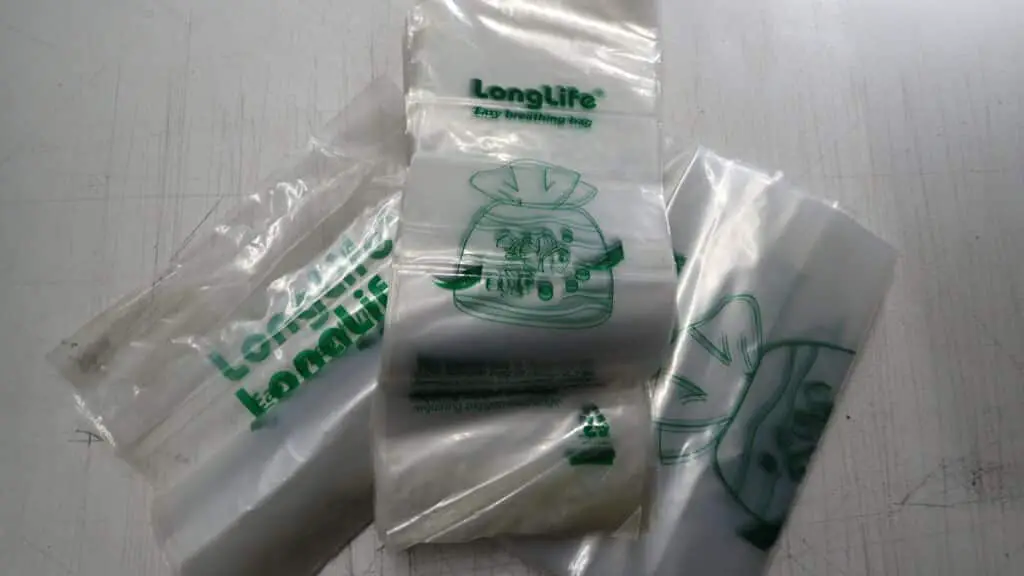
B. Packaging and shipping materials:
- Breather bags: These specialized bags allow the exchange of gases, such as oxygen and carbon dioxide, while preventing water from leaking. Breather bags are essential for safely packaging and shipping live aquatic animals, like cherry shrimp.
- Styrofoam boxes: Insulated Styrofoam boxes are an excellent choice for shipping cherry shrimp, as they help maintain a stable temperature during transit, reducing stress on the shrimp. They also provide protection from external factors, such as rough handling or impacts.
- Rubber bands for securing bags: Use sturdy rubber bands to securely seal the breather bags and ensure that they remain closed during shipping, preventing any leaks or spills.
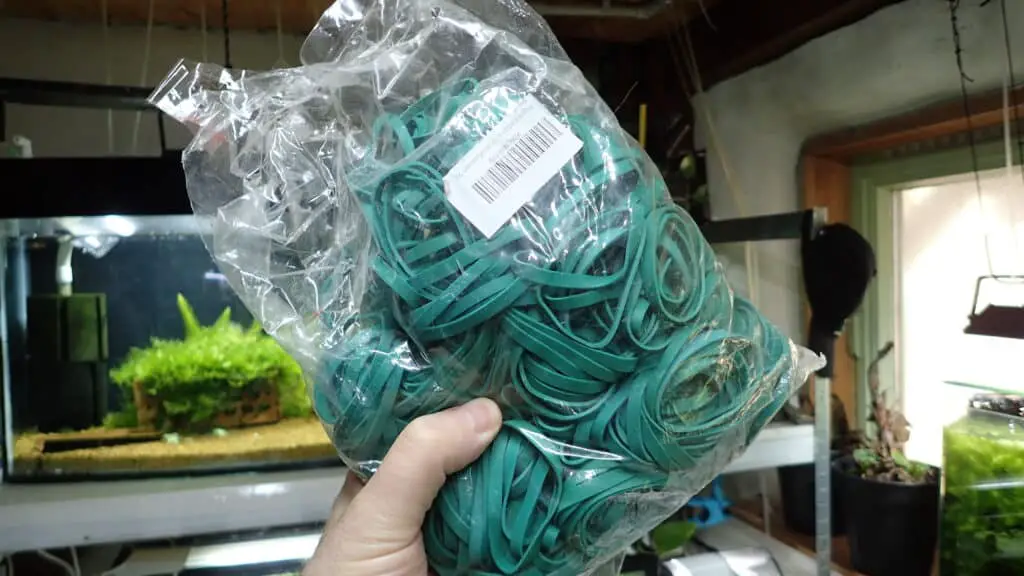
C. Shipping tips and best practices:
- Choose a reliable and fast shipping service to minimize transit time and reduce stress on the shrimp. Overnight or next-day shipping is recommended whenever possible.
- Clearly label the package with “Live Animals” or “Fragile” to alert the shipping carrier to handle the package with care.
- Provide clear acclimation instructions for the buyer, so they can properly introduce the shrimp to their new environment.
- Monitor tracking information and maintain communication with the buyer to ensure a smooth delivery process.
D. Culling and maintaining a high-quality shrimp population
- Importance of culling a. Culling helps to maintain a healthy and high-quality shrimp population by removing individuals with undesirable traits, such as poor coloration, deformities, or health issues. b. Regular culling can improve the overall quality of your shrimp stock and increase the demand for your cherry shrimp in the market.
- Culling best practices a. Use a dedicated culling tank to separate culled shrimp from the main breeding population. b. Be gentle and careful while handling shrimp during the culling process to minimize stress. c. Develop a clear set of criteria for culling, focusing on the traits most important to your shrimp-selling business.
VIII. Shipping Considerations and When to Stop Shipping
A. Temperature considerations for shipping cherry shrimp:
- Importance of stable temperatures during shipping: a. Cherry shrimp are sensitive to temperature fluctuations, which can cause stress and even death during transit. b. Ensuring stable temperatures throughout shipping is crucial for the shrimp’s well-being and customer satisfaction.
- Heat packs and their limitations: a. Heat packs can be used to maintain temperatures during shipping; however, they can be unstable and may not provide consistent heat. b. Due to their instability, some shrimp sellers may choose not to use heat packs.
- When to stop shipping based on temperature: a. It is generally advised to stop shipping cherry shrimp when temperatures fall below 10°C (50°F) to minimize the risk of cold-induced stress or death. b. Monitor local weather conditions and adjust your shipping schedule accordingly to ensure the safe transport of your shrimp.
B. Shipping during holiday seasons:
- Delays and potential risks: a. Shipping during holiday seasons may result in delays due to increased postal traffic, which can put your shrimp at risk. b. These delays can lead to extended transit times, potentially exposing your shrimp to extreme temperatures or other adverse conditions.
- Communicating with customers: a. Inform your customers of potential shipping delays during the holiday season and adjust your shipping schedule accordingly. b. Offer alternatives or temporary holds on shipments to ensure the safe arrival of their shrimp once postal services return to normal operations.
By being mindful of temperature considerations and shipping schedules, you can ensure the safe transport of your cherry shrimp, leading to satisfied customers and a thriving business.
IX. Backup Tanks and Continuous Supply
A. The importance of backup tanks with the same species:
- Having backup tanks with the same species of cherry shrimp helps ensure a constant supply of healthy shrimp for sale, even if unexpected issues arise in your main tank.
- Backup tanks provide an additional breeding environment, increasing the chances of producing a diverse and robust population.
- In the event of disease, parasites, or other issues in one tank, having a backup tank prevents the loss of your entire stock and safeguards your business.
B. Maintaining a consistent supply of shrimp for sale:
- Regularly monitor and manage the shrimp population in your tanks to maintain a balance between breeding, growth, and sales.
- Keep a close eye on breeding patterns and adjust tank conditions, diet, or other factors as needed to encourage successful breeding and maintain a steady supply of shrimp.
- Keep track of your sales and customer demand, and plan your breeding schedule accordingly to ensure a consistent supply of shrimp that meets market needs.
C. Ensuring healthy and diverse stock:
- Introduce new, unrelated shrimp into your breeding stock periodically to maintain a diverse gene pool and prevent inbreeding.
- Regularly monitor your shrimp for signs of illness or parasites, and take prompt action to address any issues that may arise. This proactive approach helps maintain a healthy shrimp population and prevents potential problems from spreading.
- Prioritize proper tank setup, nutrition, and water quality to create an optimal environment for the health, growth, and breeding success of your cherry shrimp. A thriving and diverse stock will ultimately lead to better sales and customer satisfaction.
X. Dead on Arrival (DOA) Guarantees
A. Importance of offering DOA guarantees:
- Offering DOA guarantees can instill confidence in potential buyers, reassuring them that they are purchasing from a responsible and reliable seller.
- A DOA guarantee helps to build trust and credibility for your business, leading to increased customer satisfaction and potentially more repeat buyers.
- Providing a DOA guarantee demonstrates your commitment to delivering healthy and high-quality shrimp, as well as your willingness to address any issues that may arise during shipping.
B. Guidelines for implementing a DOA policy:
- Clearly outline the terms and conditions of your DOA guarantee, including any requirements for photographic evidence, time limits for reporting, and the process for filing a claim.
- Specify how you will handle DOA situations, such as offering a refund, replacement, or credit for future purchases.
- Communicate your DOA policy clearly and prominently on your website or sales listings to ensure that buyers are aware of the guarantee before making a purchase.
C. Handling DOA situations with customers:
- Promptly respond to any DOA reports from customers, showing empathy and understanding for their situation.
- Request any necessary evidence, such as photos, to verify the claim and assess the situation.
- Follow your established DOA policy and work with the customer to find a satisfactory resolution, whether it be a refund, replacement, or credit.
- Learn from any DOA incidents and adjust your packaging, shipping methods, or other factors as needed to minimize the risk of future occurrences.
- Maintain a professional and courteous demeanor when dealing with DOA situations, even if the customer is upset. Demonstrating exceptional customer service can help diffuse tense situations and protect your business’s reputation.

XI. Customer Feedback and Dealing with Difficult Customers
A. The role of customer feedback in the shrimp-selling business:
- Customer feedback can provide valuable insights into your products and services, helping you identify areas for improvement and growth.
- Positive feedback can help you build a strong reputation and increase customer trust, leading to more sales and a loyal customer base.
- Feedback can also help you gauge customer satisfaction levels and address any issues or concerns that may arise, ensuring a positive buying experience.
B. Dealing with negative feedback:
- Address negative feedback promptly and professionally, demonstrating your commitment to customer satisfaction and resolving any issues.
- Listen to the customer’s concerns and try to understand their perspective, even if you disagree.
- Offer solutions or compromises to address the customer’s concerns, such as refunds, replacements, or discounts on future purchases.
- Learn from negative feedback and implement changes as necessary to prevent similar issues from arising in the future.
C. Strategies for handling difficult customers:
- Remain calm and professional, even if the customer is angry or upset. Maintaining your composure can help diffuse tense situations.
- Listen actively to the customer’s concerns, acknowledging their feelings, and validating their perspective.
- Offer solutions or compromises that address the customer’s concerns while protecting your business interests.
- Know when to disengage from a difficult customer if the situation becomes unproductive or excessively confrontational. Politely end the conversation and suggest that they contact you again if they have any further concerns.
D. Building a positive reputation and customer base:
- Prioritize excellent customer service and consistently deliver high-quality shrimp, ensuring that your customers have a positive buying experience.
- Encourage satisfied customers to leave reviews or testimonials, helping to build your reputation and attract new customers.
- Engage with your customers on social media and online forums, sharing your expertise and building a rapport with potential buyers.
- Offer promotions, discounts, or loyalty programs to incentivize repeat business and foster a loyal customer base.

XII. Legal and Regulatory Considerations
A. Understanding local regulations and permits:
- Required licenses and permits for breeding and selling aquatic animals: a. Research and familiarize yourself with the local regulations and requirements for breeding and selling aquatic animals, including cherry shrimp. b. Obtain any necessary licenses or permits before starting your shrimp-selling business to ensure compliance with the law. c. Keep up to date with any changes in regulations that may impact your business.
- Shipping restrictions and import/export regulations: a. Be aware of any restrictions or requirements related to shipping live aquatic animals, both domestically and internationally. b. Research import and export regulations for the countries you plan to ship to or receive shrimp from, ensuring you adhere to these rules and avoid potential fines or delays.
B. Ethical considerations:
- Sustainable and responsible breeding practices: a. Follow responsible breeding practices to maintain a healthy and diverse shrimp population while minimizing the environmental impact of your business. b. Consider sourcing shrimp from sustainable sources or participating in conservation programs to support the long-term health of aquatic ecosystems.
- Ensuring animal welfare during shipping: a. Prioritize the welfare of your shrimp during shipping by using appropriate packaging materials, maintaining stable temperatures, and choosing reliable shipping services. b. Provide clear instructions for acclimating and introducing the shrimp to their new environment, ensuring a smooth transition for the animals. c. Offer a DOA guarantee to show your commitment to delivering healthy shrimp and addressing any issues that may arise during transit.
XIII. Marketing and Promotion
A. Importance of marketing in the shrimp-selling business:
- Effective marketing helps you reach a broader audience, increasing your customer base and driving sales.
- Marketing can help you differentiate your business from competitors and showcase the unique selling points of your shrimp.
- A strong marketing strategy enables you to build brand awareness and establish a reputation within the aquatic hobbyist community.
B. Online presence and social media:
- Creating an attractive and informative website: a. Develop a professional and user-friendly website that showcases your shrimp offerings and provides essential information about your business. b. Include high-quality photos and detailed descriptions of your shrimp, as well as information on their care and maintenance. c. Make it easy for customers to browse your products, make purchases, and contact you with any questions or concerns.
- Utilizing social media platforms for promotion and networking: a. Establish a presence on popular social media platforms, such as Facebook, Instagram, and YouTube
 , to share updates, promotions, and engaging content. b. Network with other shrimp enthusiasts, hobbyists, and professionals to expand your reach and gain valuable insights into the industry. c. Use social media to showcase your expertise, answer questions, and provide valuable information to your target audience.
, to share updates, promotions, and engaging content. b. Network with other shrimp enthusiasts, hobbyists, and professionals to expand your reach and gain valuable insights into the industry. c. Use social media to showcase your expertise, answer questions, and provide valuable information to your target audience.
C. Pricing strategies:
- Competitive pricing to attract customers: a. Research your competitors and the market to determine fair and competitive prices for your shrimp. b. Ensure that your pricing reflects the quality of your shrimp and the value you provide to customers.
- Offering discounts and incentives for bulk purchases: a. Encourage bulk purchases by offering discounts or incentives, such as free shipping or reduced prices on larger orders. b. This strategy can help increase your average order size and attract customers looking for larger quantities of shrimp.
D. Participating in aquatic trade shows and events:
- Networking with other hobbyists and professionals: a. Attend aquatic trade shows, conferences, and events to network with other professionals in the industry and stay informed about trends and developments. b. Establish connections with other hobbyists and professionals, who can potentially become valuable partners, suppliers, or customers.
- Showcasing your shrimp and building brand awareness: a. Participate in shrimp competitions or set up a booth at trade shows to showcase your shrimp and demonstrate your expertise. b. Use these events as opportunities to introduce your brand to potential customers and promote your business to a wider audience.
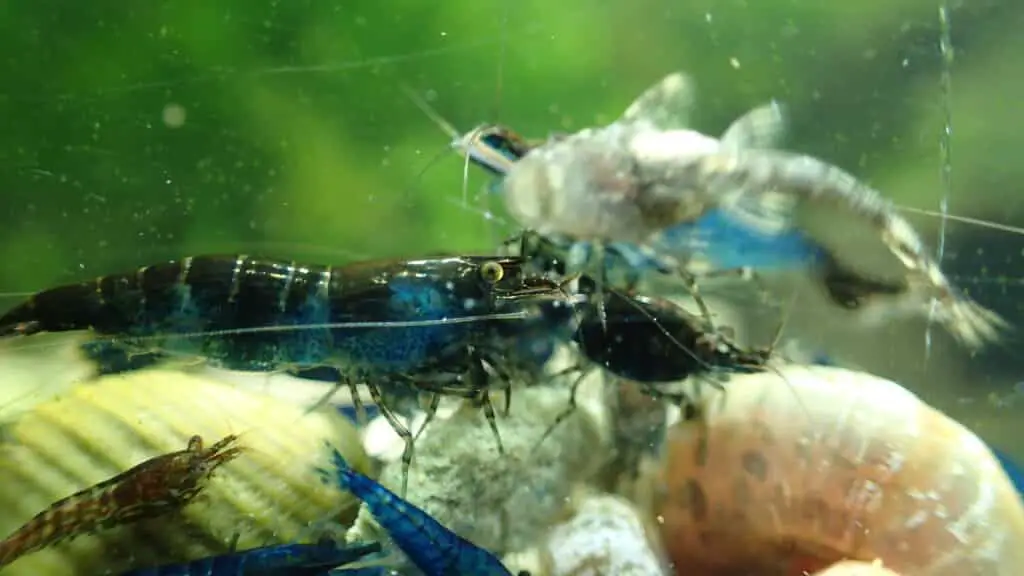
XIV. Expanding Your Business with Additional Offerings
A. The benefits of selling additional aquatic items alongside cherry shrimp:
- Diversify your product offerings to attract a wider range of customers.
- Maximize your profits by taking advantage of your existing shipping infrastructure and customer base.
- Enhance your reputation as a one-stop-shop for various aquatic needs.
B. Selling live plants:
- Offer a selection of live plants that are suitable for shrimp tanks and complement the needs of your shrimp customers.
- Popular plant species for shrimp tanks include Java moss, Anubias, and Java fern, which provide excellent cover and foraging areas for shrimp.
C. Breeding and selling easy-to-care-for fish species:
- Guppies and Endlers: a. These livebearers are popular choices due to their vibrant colors, ease of breeding, and compatibility with shrimp. b. Ensure that you provide enough hiding spots and food to minimize the risk of fish preying on shrimp.
- Bristlenose Plecos: a. These algae-eating catfish are low-maintenance and easy to breed, making them an excellent addition to your product lineup. b. Note that they can grow to a decent size, so ensure customers have adequate tank space to accommodate them.
D. Offering common snail species:
- Sell popular snail species such as Nerite snails, Malaysian trumpet snails, and Ramshorn snails.
- These snails can provide additional benefits to customers, such as algae control and substrate aeration.
- Ensure that you inform customers about the potential for snail overpopulation and provide guidance on managing snail populations responsibly.
By expanding your business to include additional products like plants, easy-to-breed fish species, and snails, you can create a more comprehensive shopping experience for your customers. This diversification allows you to make the most of your resources and attract a broader clientele, ultimately increasing your revenue and success in the aquatic trade.
XV. Conclusion
Successfully selling cherry shrimp involves a multitude of factors, including proper tank setup, maintaining healthy shrimp populations, breeding strategies, and efficient shipping practices. By following the guidelines and advice provided in this article, you can establish a thriving shrimp-selling business while ensuring the well-being of your shrimp and the satisfaction of your customers.
To help you further, we’ve compiled a handy list of items you should consider purchasing in bulk for your shrimp-selling business:
- Shrimp food (crushed flakes, pleco wafers)
- Dechlorinators
- Breather bags
- Styrofoam shipping boxes
- Rubber bands for securing bags
- Sponge filters
- Plant species for shrimp tanks
By purchasing these items in bulk, you can save on costs and ensure that you always have the necessary supplies on hand to keep your shrimp healthy and happy. With careful planning, dedication, and the right approach to customer service, you’ll be well on your way to becoming a successful cherry shrimp seller.
XVI. Frequently Asked Questions (FAQs) about Selling Cherry Shrimp
- Q: How much should I charge for my cherry shrimp?A: The price of cherry shrimp can vary depending on factors such as size, color, and grade. Research your competition and the market to determine a fair and competitive price that reflects the quality of your shrimp.
- Q: How can I ensure the shrimp I’m selling are healthy and disease-free?A: Regularly inspect your shrimp for signs of diseases or parasites, and maintain a clean, well-maintained tank environment to minimize the risk of health issues. Quarantine new shrimp before adding them to your main breeding tanks to prevent the spread of diseases.
- Q: How do I package and ship live shrimp?A: Use breather bags, rubber bands, and styrofoam boxes to securely package your shrimp for shipping. Ensure that the bags are properly sealed and that the box is insulated to maintain stable temperatures during transit.
- Q: Can I ship cherry shrimp internationally?A: Shipping live aquatic animals internationally may be subject to import/export regulations and restrictions. Research the regulations for the destination country and obtain any necessary permits before attempting international shipments.
- Q: How do I manage and maintain a consistent supply of cherry shrimp for sale?A: Implement effective breeding practices and maintain backup tanks with the same species to ensure a steady supply of shrimp. Regularly monitor your shrimp population to avoid overcrowding and maintain a healthy, diverse stock.
- Q: How can I differentiate my shrimp-selling business from competitors?A: Focus on providing excellent customer service, high-quality shrimp, and a diverse product offering. Share your expertise and engage with customers through social media, online forums, and other marketing channels to establish a strong reputation in the aquatic hobbyist community.
- Q: What other products can I sell alongside cherry shrimp to diversify my business?A: Consider offering live plants, easy-to-breed fish species like guppies, endlers, and bristlenose plecos, and common snail species to provide a more comprehensive shopping experience for your customers.

